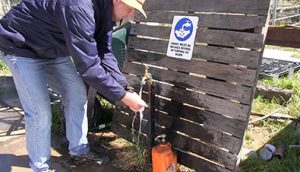Read the latest information on
Foot-and-mouth disease
 Diseases which can jump from animals to humans have been around for as long as our species has been domesticating others. Technically known as zoonoses (singular zoonosis) or diseases which are zoonotic, these can be a danger to the health of both humans and animals living and working in close proximity.
Diseases which can jump from animals to humans have been around for as long as our species has been domesticating others. Technically known as zoonoses (singular zoonosis) or diseases which are zoonotic, these can be a danger to the health of both humans and animals living and working in close proximity.
In the lead-up to World Zoonosis Day on 6 July, Animal Health Australia (AHA) is reminding livestock owners to use common sense measures when working around animals, and to get themselves checked out if they are unusually sick.
“Zoonotic diseases are just one of the risks which are present on farms with pets, working animals and livestock,” says Dr Simon Humphrys, AHA’s Executive Manager Biosecurity and Product Integrity.
“In a worst case scenario, illnesses caught from animals at work can also lead to a much bigger threat to your business, especially if that means you’re unable to work for a period.”
Some zoonoses, such as Q fever or leptospirosis, may have minimal impact on your livestock, but can range from a mild illness through to a very serious infection when contracted by farm workers. While in most cases these are manageable and treatable diseases, prevention and protection are the best approaches and can be achieved with simple forethought and planning.
Other zoonoses, like Hendra virus and several strains of highly pathogenic avian influenza, can be fatal to both people and animals. An outbreak of such a disease among livestock would be devastating not only to the affected properties, but to the wider community and the associated industry as well, with flow-on effects for their supply chains and in some cases access to markets.
“Many of the more serious zoonotic diseases, for example rabies, are thankfully not present in Australia, and a spillover of one of these would trigger a significant biosecurity emergency response effort among both animal and human health authorities,” Dr Humphrys explained.
Interaction between animals, humans and pathogens that infect both does throw up new and emerging diseases, as was the case with Nipah virus and SARS, a close relative of the coronavirus which causes COVID-19. These can bring unique challenges in terms of isolating exactly where the disease has come from, how it spreads, what impact it will have on different species, and how we manage the health risks to animals and people.
“Much like we saw with Hendra and more recently with COVID-19, it’s entirely possible that the next big threat to our health will be something we’ve never seen before,” Dr Humphrys said.
“So if you are working closely with animals I’d urge you to be aware of the risks of zoonotic disease, take appropriate and practical measures to protect yourself and, really importantly, report any unusual or suspect signs of disease in either farm workers or livestock.”
Find out more about how your production practices can impact the health of you and your animals on the Farm Biosecurity website.
Simple steps to minimise your risk from Animal Health Australia:
Emergency Animal Disease Hotline: 1800 675 888